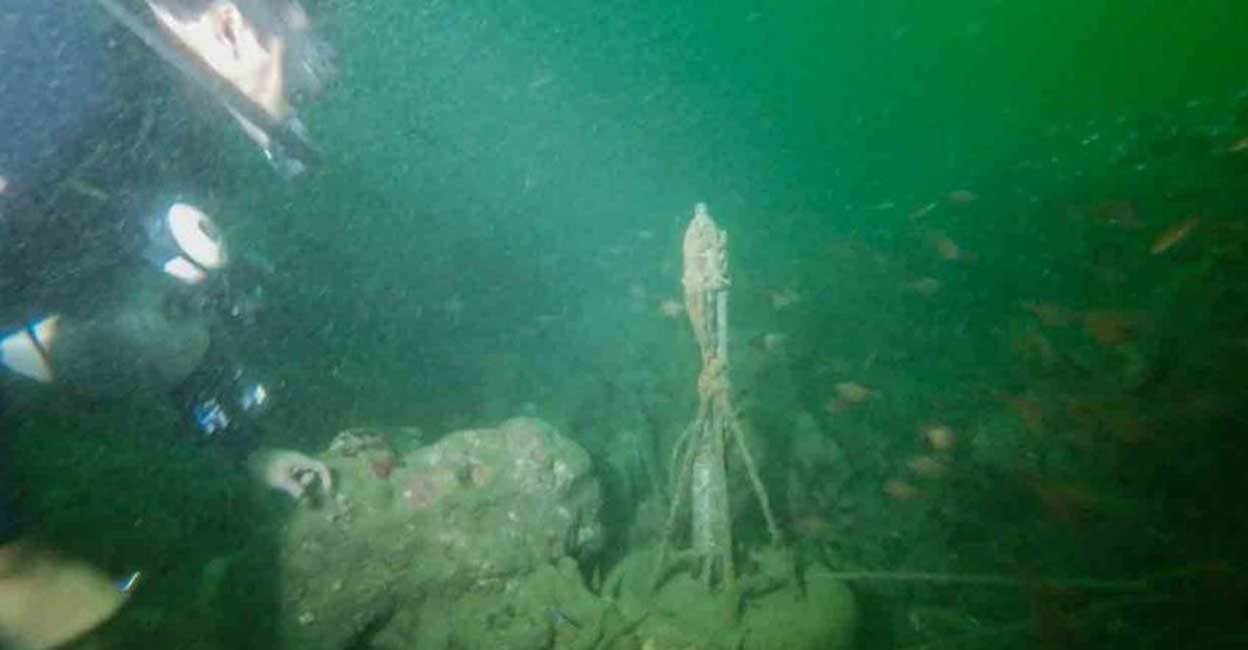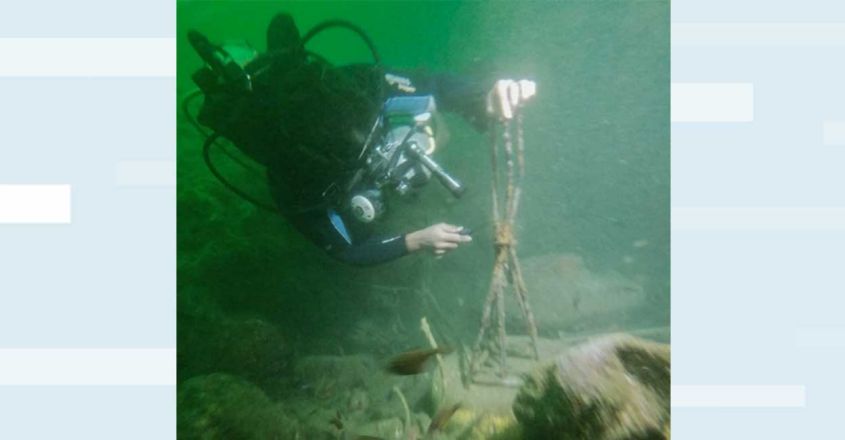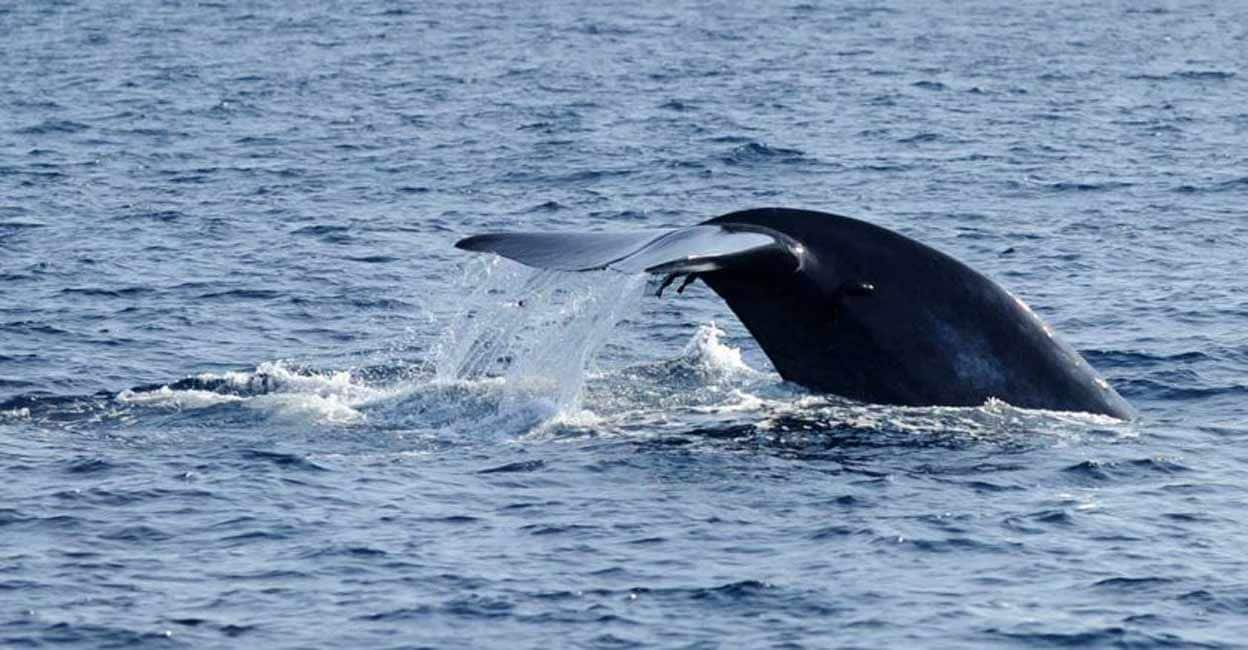Ever heard the sound of a blue whale? Listen to it recorded first time off Kerala coast

Mail This Article
Thiruvananthapuram: Researchers have recorded the sound of the blue whale for the first time off the Kerala coast. Incidentally, the researchers were tracking the travel path of a humpback whale named ‘Luban’ which had reached coast of the state from the sea off Oman two years ago when they stumbled on a sound similar to that emanating from a conch shell belonging to the blue whale.
The audio clip of the blue whale’s sound has been accessed by ‘Manorama Online.’ It was recorded on ‘hydrophone’, an equipment installed on the seafloor 50 feet below the surface between Vizhinjam and Poovar in Thiruvananthapuram district of Kerala.
Tracking Luban
The humpback whale named Luban had set off on its journey from Masirah Bay off Oman in November 2017 towards Kerala and was tracked by an organization named Arabian Sea Humpback Whale Network using satellite-based radio tagging. This information was passed on by the Arabian Sea Network to researchers based in India.
Previously, scientists believed that humpback whales did not travel across the Arabian Sea even though they covered almost 25,000 km every year during migrations.
On receiving the information from the Arabian Sea Network, scientists attached to the Department of Aquatic Biology and Fisheries under the Kerala University began tracking Luban with help of Coast Guard. The humpback whale, which is black or grey in colour with white on the underbelly and tip of the tail, swam at a speed of around five km per hour. At intervals of 40 minutes, it came to the sea surface.
Researchers observed that Luban continued its journey to Mannar off the Tamil Nadu coast from Kerala and returned to the Oman coast after one month. Soon, a study was launched by the Aquatic Biology Department along with the Arabian Sea Network under the leadership of Dr Dipani Sutaria, who researched on sea mammals.
Seeking fisherfolk’s help
Whales are a very difficult subject to study as they could be located only at least 30 km off the shore and the expenses involved are high. To overcome these challenges, Dr A Biju Kumar, head of the Aquatic Biology Department, and his team decided to seek the help of fisherfolk who ventured into the deep sea.
Many veteran fishermen have deep knowledge about whales. The researchers interviewed these fishermen and filed their observations. According to the fishermen, whales are often sighted after the monsoon following shoals of sardine. The massive mammals sometimes approached their boats, said the fishermen, who saw whales after sailing 20-30 km away from the shore.

Expanding the study
Subsequently, Biju Kumar’s team decided to study other whales also in addition to the humpback whale and the research began in 2019 after obtaining permission from the Forest Department as whales are an endangered species.
As part of the project, the hydrophone was installed in March 2021 with the support of Arabian Sea Network, Coast Guard and Marine Police. The hydrophone needed to be fixed 50 feet below the sea surface and the services of divers from Pondicherry was sought as divers in Kerala were trained to reach only a depth of 30 feet.
The hydrophone, fixed between the rocks on the floor, had a battery life of three months and it was retrieved in June this year. Researchers examined the recordings with special software and checked for the sound of a humpback whale. However, to their surprise, what the scientists heard was the sound of the blue whale.

Peculiarities of a blue whale
According to scientists, each whale produces a different sound. Whales communicate using their sound and that recorded off Kerala coast was emitted after a meal. While a blue whale’s sound could be heard 30 km away, that of a humpback whale is audible 50-100 km away. In fact, one can listen to these sounds even from the shore at night.
Even though blue whale, the biggest creature on earth, is present in all oceans, the most massive ones live in the Atlantic, which is its natural habitat. The variety seen in the Indian Ocean has a length of 30 metres and weighs 150 tonnes. Blue whales feed mainly on tiny marine creatures such as prawns and need five tonnes of food a day.

Researchers said that more studies are required to learn the path of the whales visiting the Kerala coast. There is significant presence of whales near the southern coast of Kerala and studying them would not be much difficult as the animals travel through the sea between India and Sri Lanka, they added.

